I plan to depict an Sd.Kfz.251 as a DAK vehicle.
The exterior scheme will be a heavily-worn sand colour over dark grey, but I am wondering whether the interior colour would be left in its original dark grey.
Hosted by Darren Baker
DAK half-track interior colour?
pbennett

Joined: October 14, 2007
KitMaker: 464 posts
Armorama: 412 posts
Posted: Thursday, January 31, 2019 - 01:33 AM UTC
smorko

Joined: March 11, 2013
KitMaker: 94 posts
Armorama: 89 posts
Posted: Thursday, January 31, 2019 - 02:09 AM UTC
Not an expert, but equipment that came in dark gray (panzergrau) to NA was repainted on the spot and they didn't bother to paint interiors. The stuff that came painted in AK colours from Europe had the interiors painted as well. They also often used mud or whatever they could to cover the panzergrau for the early armor. But also keep in mind that chipping on the prepainted one should not reveal panzergrau underneath but rather primer (most probably red) or rust.
panzerbob01

Joined: March 06, 2010
KitMaker: 3,128 posts
Armorama: 2,959 posts

Posted: Thursday, January 31, 2019 - 05:03 AM UTC
Quoted Text
Not an expert, but equipment that came in dark gray (panzergrau) to NA was repainted on the spot and they didn't bother to paint interiors. The stuff that came painted in AK colours from Europe had the interiors painted as well. They also often used mud or whatever they could to cover the panzergrau for the early armor. But also keep in mind that chipping on the prepainted one should not reveal panzergrau underneath but rather primer (most probably red) or rust.
There's probably yet another layer of complexity when it comes to DAK vehicles and their colors... And to "chipping" and wear-and-tear effects.
All vehicles initially-shipped went to Africa wearing their regulation dunkelgrau. This first group rapidly got a variety of "camo" treaments - the mentioned mud, "borrowed" Italian sand paint, and captured Brit paints. Maybe even some local civilian paints were occasionally used. That, and a lot of dust - some of which was opportunistically collected on dampened vehicles. The interiors were not purposefully repainted or mudded, so remained dunkelgrau. Chipping through the "camo" coats would reveal dunkelgrau over (mostly) rot-oxide primer. Wear from blown sand (the much more common effect, I am sure) would reveal the dunkelgrau original coat.
Now for the complexity... Probably no new-production vehicles of any sort were factory-painted specifically for shipment to Africa in 1941 or 1942, and few, if any, in 1943. Factory painting regs specified Dunkelgrau for all vehicles up to Mar 1943. Most Africa vehicles were seconded from units in southern Russia or from stocks in the central Reich through to 1943. Vehicles were shipped to Italy for prep to send to Africa. Prep included repainting using one of the evolving Africa schemes. This would have been over the original factory dunkelgrau, or, in some cases, over the previous field-shop-applied camo allowed for use by some units operating in southern Russia, for equipment seconded from there. These too would have dunkelgrau on rot-oxide beneath whatever camo color they were repainted with in Russia.
As factory painting regs remained "dunkelgrau" up to Mar 1943, probably very few Africa vehicles escaped having a DG coat as their initial color, regardless of which scheme they received prior to shipping to Africa. And few would have been repainted internally for use in Africa - there would have been little gain from doing so, and need for replacements far out-stripped the available supply. Time was of the essence.
From this, probably most, if not "all", Africa vehicles (save perhaps those few Tiger I...) would have externally weathered out to reveal DG under whatever their final color was. Likewise, whether repainted internally or not in Italy for use in Africa, "all", German-made vehicles with exposed interiors would have had a DG layer inside. So internal wear and tear would also reveal a DG layer. Captured Brit and old Italian vehicles were sometimes field-repainted in Africa by the Germans - these, too, would likely have had their original interior colors intact.
So, fun in the world of painting!

Cheers! Bob

PS: One of my fav build projects (built 2009 and a big show winner through to the 2018 IPMS Nats...) is a DAK "gun truck" built on Tamiya's old Horch kit... I painted the Horch interior a "reasonable DAK sand color of 1942"... It looks GREAT! But were I doing it again, armed with better knowledge now, I would be going Dunkelgrau inside with perhaps mud and dirt and dust!
RLlockie

Joined: September 06, 2013
KitMaker: 1,112 posts
Armorama: 938 posts
Posted: Thursday, January 31, 2019 - 06:04 AM UTC
I’d have to disagree about no kit being sent to Africa in a factory Tropen scheme. Once the first batch of vehicles for 5.leichte had arrived in Dunkelgrau and been repainted locally, much or most of subsequent arrivals that were specified for Tropen use were painted in the Tropen scheme at the factory.
This included vehicles for southern parts of the Ostfront as well as Africa. There are photos of Sd. Kfz. 250 As outside a factory in Germany in that scheme. Jentz also refers to the 38t hull SPGs with the Soviet 7.62cm gun being painted as such when slated to go to Africa. I believe that 15PD and the replacements for 21PD’s losses were also factory painted in the Tropen scheme.
Happy to see good evidence that Dunkelgrau was in universal use up to February 1943 though.
This included vehicles for southern parts of the Ostfront as well as Africa. There are photos of Sd. Kfz. 250 As outside a factory in Germany in that scheme. Jentz also refers to the 38t hull SPGs with the Soviet 7.62cm gun being painted as such when slated to go to Africa. I believe that 15PD and the replacements for 21PD’s losses were also factory painted in the Tropen scheme.
Happy to see good evidence that Dunkelgrau was in universal use up to February 1943 though.

Frenchy

Joined: December 02, 2002
KitMaker: 12,719 posts
Armorama: 12,507 posts

Posted: Thursday, January 31, 2019 - 06:48 AM UTC
Quoted Text
Once the first batch of vehicles for 5.leichte had arrived in Dunkelgrau and been repainted locally, much or most of subsequent arrivals that were specified for Tropen use were painted in the Tropen scheme at the factory.
AFAIK, the colors are original :
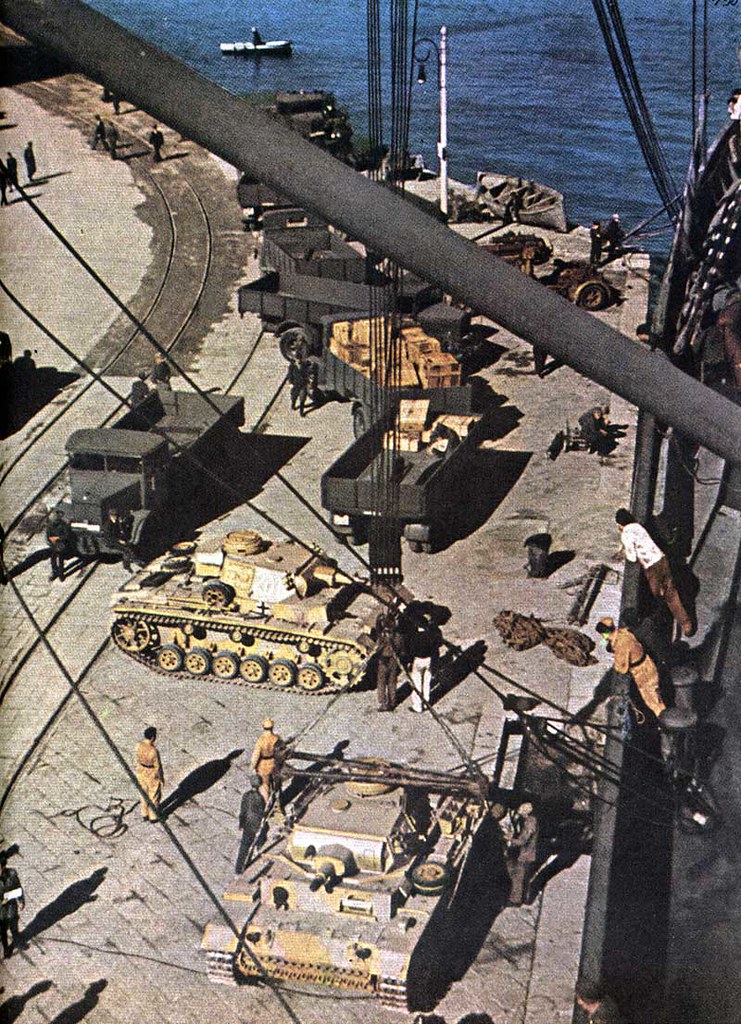
H.P.

BogiBg

Joined: May 29, 2018
KitMaker: 397 posts
Armorama: 388 posts

Posted: Thursday, January 31, 2019 - 08:01 AM UTC
Quoted Text
I plan to depict an Sd.Kfz.251 as a DAK vehicle.
The exterior scheme will be a heavily-worn sand colour over dark grey, but I am wondering whether the interior colour would be left in its original dark grey.
Paul, if exterior is gray - interior is gray too, except for the front part which can be white.
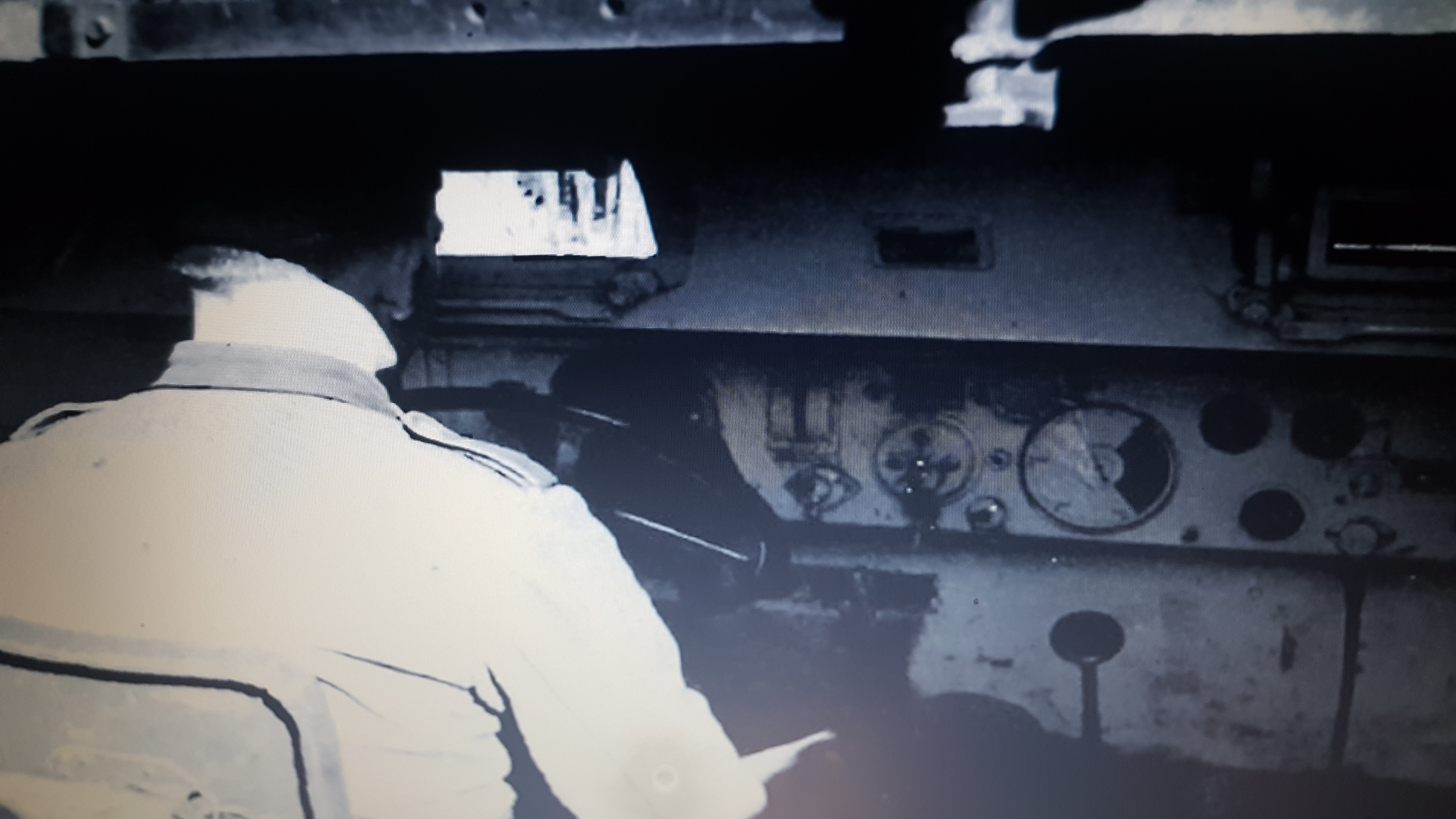
I presume that you are building Sd.Kfz. 251 ausf C and in that case, heavily-worn sand colour over dark grey is probably wrong. My advice - find a picture of vehicle you would like to depict. Or, simply, do it as you like, nobody can prove you wrong.

bill_c

Joined: January 09, 2008
KitMaker: 10,553 posts
Armorama: 8,109 posts

Posted: Thursday, January 31, 2019 - 09:47 AM UTC
Quoted Text
Paul, if exterior is gray - interior is gray too, except for the front part which can be white.
Not sure Elfenbein ("ivory") would be accurately rendered with white. More like a light cream.
panzerbob01

Joined: March 06, 2010
KitMaker: 3,128 posts
Armorama: 2,959 posts

Posted: Thursday, January 31, 2019 - 09:49 AM UTC
There continues a lot of debate (and maybe some confusion) as to what color(s) were applied at vehicle manufacturing / assembly plants, as versus what color(s) were authorized for field use and applied elsewhere.
As FAIK (and I've chased this question for YEARS!), original equipment assembly plants (Daimler-Benz, MIAG, etc.) painted all of their products using the applicable base-coat regulations - from 1937 - Mar 1943, this was RAL7021 "dunkelgrau". There was no production regulation that I've been able to discover for painting some vehicles different colors (such as some "Tropisch" scheme) at the assembly plants, and, as all vehicles were contracted for by OKW and not by individual units, there seems to be no obvious mechanism which would actually have allowed plants to select specific tanks from the assembly-line to go to N. Africa, and then paint them some alternative colors.
Of course, this is all "reason", and we all know how "reason" sometimes disagrees with observed practices...
There is no debate that special color-schemes were approved for N. Africa - bound vehicles from later 1941, and clearly equipment was carefully prepped and painted - in Italy - for use therein. But this does not in any way suggest nor support any such painting in the initial assembly plants.
Several searches of the Web have failed to reveal any actual evidence that there were "Tropisch" / Tropen paint-schemes applied during original assembly by DB, MIAG, etc.
Until there IS such record, we must assume that ALL production vehicles did originally leave the 1941 - 1942 assembly plants wearing the single regulation base-coat color of RAL7021.
I would note that CONVERSIONS (the Pz. 38(t) spg...) and REFURBED vehicles were a different matter entirely! Conversions would have been painted after construction, and could have been painted following different rules. Likewise, refurbished vehicles were often destined for some specific units and operational areas... and could well be painted to fit those end-users.
Following Jentz and Doyle, 2002, as posted on Missing-Lynx.com:
[quote] Facts about German Camouflage Paint in World War II
by Thomas L. Jentz and Hilary L. Doyle
As with all of their procurement efforts, Germany established a program to control manufacturing and application of camouflage paints. Specifications were sent to the paint suppliers detailing the exact method for preparing test specimens to send in for examination and approval. In addition, the inspectors at the assembly plants were provided with color swatches to use in accepting products painted in accordance with orders specified in contracts. This strictly controlled and enforced program ensured uniformity in both the paint and the final assembled product. These camouflage paints were used for the entire range of military equipment and vehicles intended for frontline use - not just Panzers.
At the start of the War, all Panzers were painted in a two-tone scheme of Dunklegrau (dark grey) and Dunklebraun (dark brown). Dunklegrau RAL 46 (later renumbered RAL 7021) was the base coat. Irregularly shaped patches of Dunklebraun RAL 45 (later renumbered RAL 7017) were to be spray painted onto 1/3rd of the surface.
In June 1940, a general order was issued to stop applying patches of Dunklebraun and only use Dunklegrau RAL 46 for the entire surface.
In February 1943, a general order was issued to change the base coat from Dunklegrau to Dunklegelb nach Muster (later numbered RAL 7028) - a tan color. Field units were issued tins of Rotbraun RAL 8017... [quote]
J & D refer to the color regulations. They make no mention whatsoever of any "Tropen" colors being applied at the original factory. It was, per regulation from 1937 to 1943, Dunkelgrau base-coats for all equipment.
This conforms to my understanding (or more correctly, mine to what they and their sources said!).
It does raise a very interesting question... Assembly plants built NEW tanks per broad procurement contracts from the OKW. OKW prescribed what color(s) equipment would be delivered in. I rather doubt that specific hulls were ordered for or allocated to specific units during original assembly (but hey! It IS possible!). OKW ordered x number of tanks for the Wehrmacht. Unless they actually "ordered tanks for a specific unit and/or destination", I can see no mechanism that would actually allow some of them to be initially painted at the assembly plant in "tropen" schemes...
Today, military vehicles in the US are contracted for by the using branch - The Army buys some, the Marines buy some, etc. Each contract specifies what the purchasing branch wants delivered. NO uniform painting or color reg pertains across all of US DoD. So Army vehicles can be a different color then Marine vehicles.
For the Germans in WWII, there were basically two tank-buying agencies; the OKW (for Heer units), and the SS (for Waffen-SS units). There was one apparent uniform regulation regarding factory base-coat painting and colors (but end-users had discretion as to what happened to vehicles once delivered from assembly plants).
And the debate goes on!
Bob
As FAIK (and I've chased this question for YEARS!), original equipment assembly plants (Daimler-Benz, MIAG, etc.) painted all of their products using the applicable base-coat regulations - from 1937 - Mar 1943, this was RAL7021 "dunkelgrau". There was no production regulation that I've been able to discover for painting some vehicles different colors (such as some "Tropisch" scheme) at the assembly plants, and, as all vehicles were contracted for by OKW and not by individual units, there seems to be no obvious mechanism which would actually have allowed plants to select specific tanks from the assembly-line to go to N. Africa, and then paint them some alternative colors.
Of course, this is all "reason", and we all know how "reason" sometimes disagrees with observed practices...
There is no debate that special color-schemes were approved for N. Africa - bound vehicles from later 1941, and clearly equipment was carefully prepped and painted - in Italy - for use therein. But this does not in any way suggest nor support any such painting in the initial assembly plants.
Several searches of the Web have failed to reveal any actual evidence that there were "Tropisch" / Tropen paint-schemes applied during original assembly by DB, MIAG, etc.
Until there IS such record, we must assume that ALL production vehicles did originally leave the 1941 - 1942 assembly plants wearing the single regulation base-coat color of RAL7021.
I would note that CONVERSIONS (the Pz. 38(t) spg...) and REFURBED vehicles were a different matter entirely! Conversions would have been painted after construction, and could have been painted following different rules. Likewise, refurbished vehicles were often destined for some specific units and operational areas... and could well be painted to fit those end-users.
Following Jentz and Doyle, 2002, as posted on Missing-Lynx.com:
[quote] Facts about German Camouflage Paint in World War II
by Thomas L. Jentz and Hilary L. Doyle
As with all of their procurement efforts, Germany established a program to control manufacturing and application of camouflage paints. Specifications were sent to the paint suppliers detailing the exact method for preparing test specimens to send in for examination and approval. In addition, the inspectors at the assembly plants were provided with color swatches to use in accepting products painted in accordance with orders specified in contracts. This strictly controlled and enforced program ensured uniformity in both the paint and the final assembled product. These camouflage paints were used for the entire range of military equipment and vehicles intended for frontline use - not just Panzers.
At the start of the War, all Panzers were painted in a two-tone scheme of Dunklegrau (dark grey) and Dunklebraun (dark brown). Dunklegrau RAL 46 (later renumbered RAL 7021) was the base coat. Irregularly shaped patches of Dunklebraun RAL 45 (later renumbered RAL 7017) were to be spray painted onto 1/3rd of the surface.
In June 1940, a general order was issued to stop applying patches of Dunklebraun and only use Dunklegrau RAL 46 for the entire surface.
In February 1943, a general order was issued to change the base coat from Dunklegrau to Dunklegelb nach Muster (later numbered RAL 7028) - a tan color. Field units were issued tins of Rotbraun RAL 8017... [quote]
J & D refer to the color regulations. They make no mention whatsoever of any "Tropen" colors being applied at the original factory. It was, per regulation from 1937 to 1943, Dunkelgrau base-coats for all equipment.
This conforms to my understanding (or more correctly, mine to what they and their sources said!).
It does raise a very interesting question... Assembly plants built NEW tanks per broad procurement contracts from the OKW. OKW prescribed what color(s) equipment would be delivered in. I rather doubt that specific hulls were ordered for or allocated to specific units during original assembly (but hey! It IS possible!). OKW ordered x number of tanks for the Wehrmacht. Unless they actually "ordered tanks for a specific unit and/or destination", I can see no mechanism that would actually allow some of them to be initially painted at the assembly plant in "tropen" schemes...
Today, military vehicles in the US are contracted for by the using branch - The Army buys some, the Marines buy some, etc. Each contract specifies what the purchasing branch wants delivered. NO uniform painting or color reg pertains across all of US DoD. So Army vehicles can be a different color then Marine vehicles.
For the Germans in WWII, there were basically two tank-buying agencies; the OKW (for Heer units), and the SS (for Waffen-SS units). There was one apparent uniform regulation regarding factory base-coat painting and colors (but end-users had discretion as to what happened to vehicles once delivered from assembly plants).
And the debate goes on!

Bob


BogiBg

Joined: May 29, 2018
KitMaker: 397 posts
Armorama: 388 posts

Posted: Thursday, January 31, 2019 - 07:07 PM UTC
Quoted Text
Quoted TextPaul, if exterior is gray - interior is gray too, except for the front part which can be white.
Not sure Elfenbein ("ivory") would be accurately rendered with white. More like a light cream.
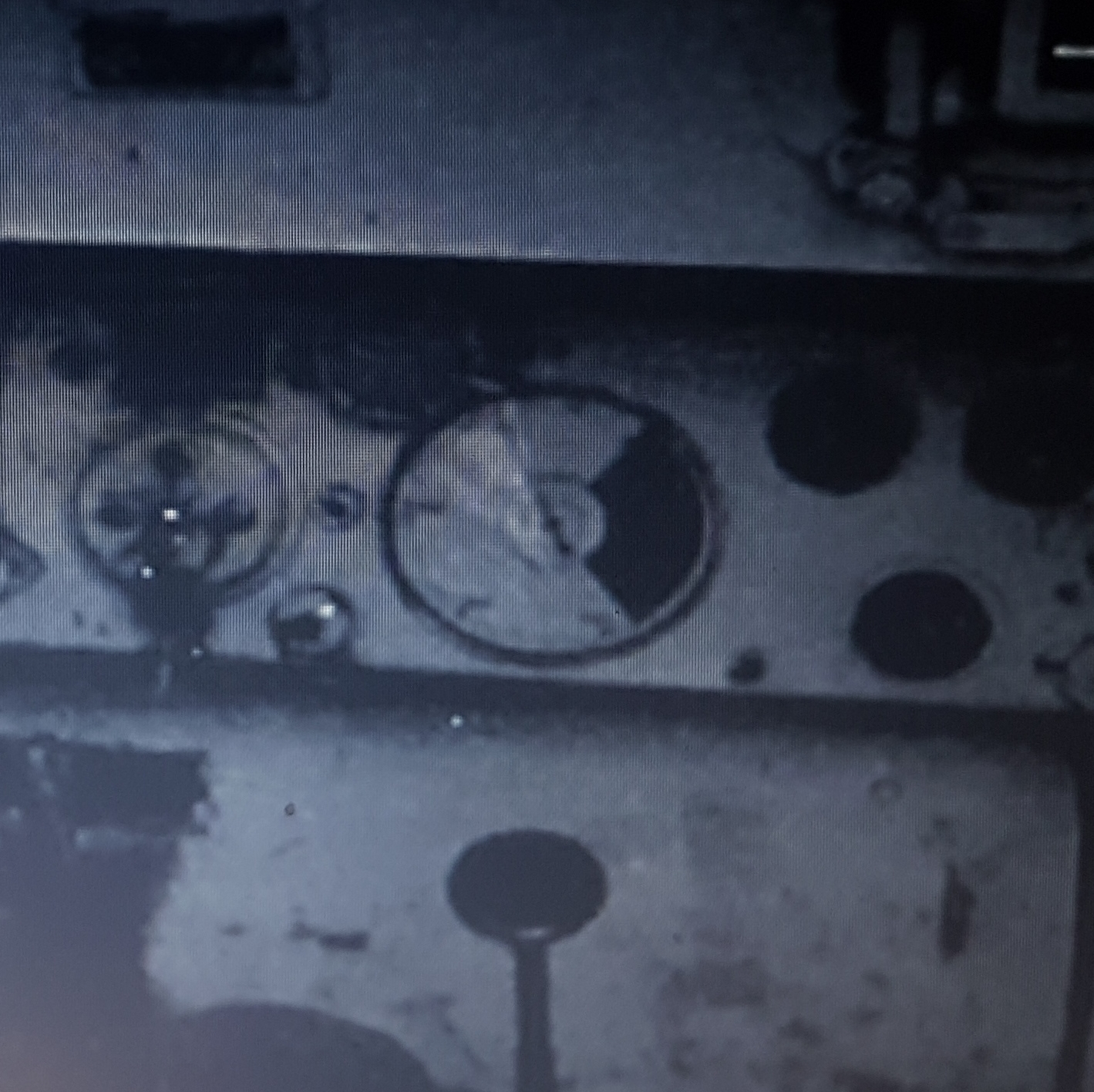
When I look at the dial, I don't see a difference between white inside the dial and surrounding color. So, eder interior color is white, or light color inside of dial is "Elfenbein".

BogiBg

Joined: May 29, 2018
KitMaker: 397 posts
Armorama: 388 posts

Posted: Thursday, January 31, 2019 - 07:33 PM UTC
On this picture it looks like Elfenbein
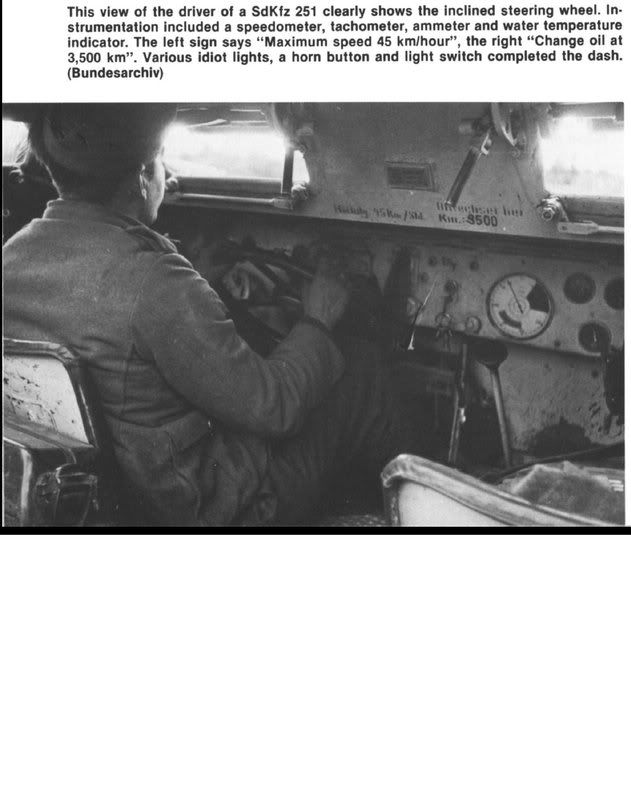
But it can, as well, be later dark yellow
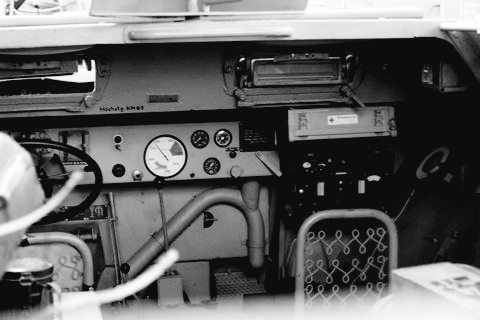
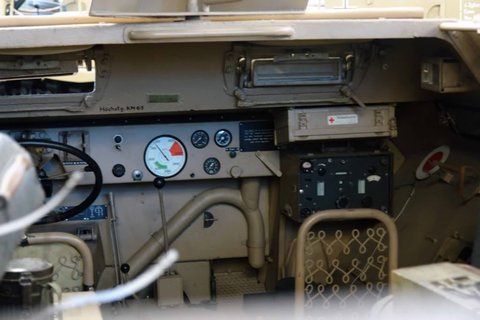
which, I think have the almost the same appearance on black and white photos. I paint interior of my models white and after weathering it - it looks ivory enough.

But it can, as well, be later dark yellow


which, I think have the almost the same appearance on black and white photos. I paint interior of my models white and after weathering it - it looks ivory enough.
 |






